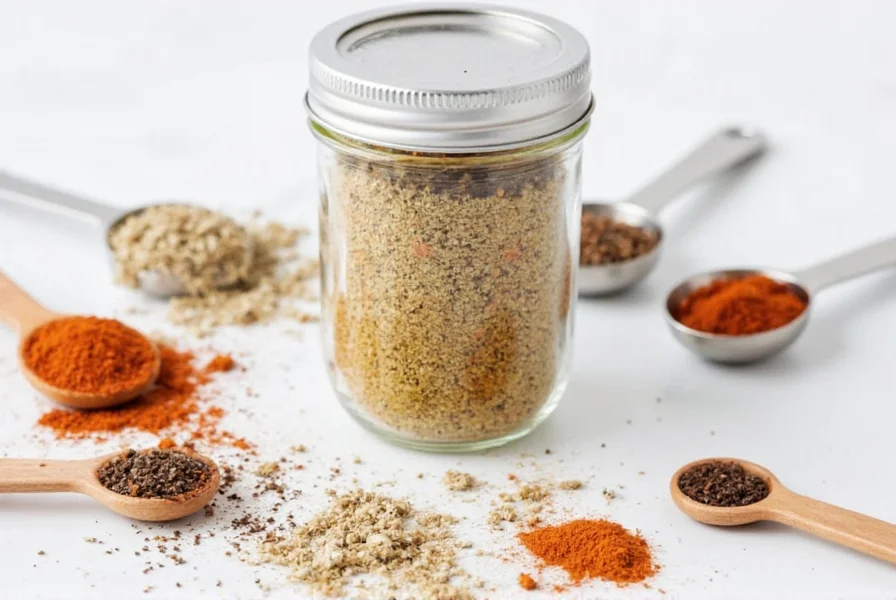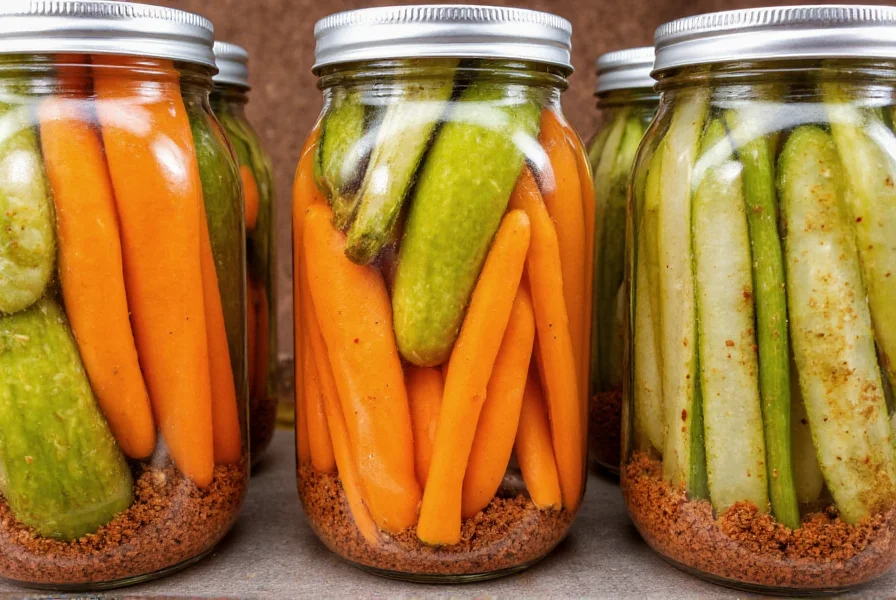Creating the perfect pickling spice blend requires understanding both the individual components and how they work together to enhance preserved foods. Unlike single-purpose spices, pickling spice combines multiple elements that contribute different flavor dimensions - heat, warmth, earthiness, and subtle sweetness - all working in harmony to transform ordinary vegetables into complex, flavorful preserved foods.
The Essential Components of Traditional Pickling Spice
While regional variations exist, most authentic pickling spice recipes share a core set of ingredients that provide the foundation for that distinctive tangy, aromatic profile. Understanding each component's role helps you customize blends to your taste preferences.
| Spice | Flavor Profile | Primary Function in Pickling |
|---|---|---|
| Mustard Seeds | Pungent, slightly bitter | Provides sharpness and helps maintain crispness |
| Coriander Seeds | Citrusy, floral, slightly sweet | Creates aromatic complexity and balances acidity |
| Black Peppercorns | Sharp, pungent heat | Adds subtle warmth without overwhelming |
| Allspice Berries | Warm, sweet, complex (clove-cinnamon-nutmeg) | Provides depth and rounded warmth |
| Bay Leaves | Herbal, slightly floral | Adds subtle background notes and complexity |
Regional Variations in Pickling Spice Formulations
Pickling traditions differ significantly across cultures, resulting in distinctive regional spice blends. Understanding these variations helps you select or create the perfect blend for specific pickled foods.
In Eastern European traditions, pickling spice often contains more dill seed and garlic for classic cucumber pickles. German-style blends frequently include more mustard seed and less sweetness. Southern American pickling spice sometimes incorporates red pepper flakes for added heat, while Japanese sunomono pickling uses minimal spice, focusing instead on rice vinegar and subtle aromatics.
When creating your homemade pickling spice recipe for cucumbers, consider which tradition aligns with your flavor preferences. For classic dill pickles, emphasize dill seed and garlic. For sweeter bread-and-butter style pickles, increase the mustard seed and add a touch of celery seed.

Creating Your Perfect Homemade Pickling Spice Blend
While store-bought options exist, crafting your own pickling spice from scratch allows for complete customization and superior freshness. Here's a versatile base recipe you can adjust to your taste:
Basic All-Purpose Pickling Spice Recipe
Makes enough for 4-6 quarts of pickling liquid:
- 2 tablespoons mustard seeds (yellow or brown)
- 2 tablespoons coriander seeds
- 1½ tablespoons black peppercorns
- 1½ tablespoons allspice berries
- 1½ tablespoons whole cloves
- 4-6 bay leaves, broken into pieces
- 1 tablespoon dill seed (for cucumber pickles)
- 1 teaspoon red pepper flakes (optional, for heat)
To prepare, combine all ingredients in a bowl. For immediate use, add 2-3 tablespoons of the blend per quart of pickling liquid. For longer-term storage, place the mixture in cheesecloth or spice bags before adding to your pickling solution to facilitate easy removal.
When making pickling spice for beets, consider adding ½ teaspoon of ground ginger and reducing the cloves to ½ tablespoon for a warmer, earthier profile that complements beets' natural sweetness. For pickled eggs spice blend, increase the mustard seed to 3 tablespoons and add ½ teaspoon of celery seed for enhanced complexity.
Maximizing Flavor in Your Pickled Creations
The timing and method of adding pickling spice significantly impacts final flavor. For best results when making how to use pickling spice for vegetables, follow these professional techniques:
- Toast whole spices in a dry skillet over medium heat for 2-3 minutes before use to enhance aromatic compounds
- Add spice blend to cold pickling liquid rather than hot, allowing flavors to develop gradually
- Simmer, don't boil the pickling liquid with spices for 10-15 minutes to extract flavors without bitterness
- Remove spice bags before canning to prevent over-extraction and potential bitterness during storage
- Allow pickled items to mature for at least 2 weeks before eating for optimal flavor development
When creating spice blend for refrigerator pickles, reduce the spice quantity by 25% since these are consumed relatively quickly and don't undergo the same flavor development as canned pickles.
Storage and Shelf Life of Homemade Pickling Spice
Proper storage maintains the potency of your homemade pickling spice mix. Store your dry spice blend in an airtight container away from light and heat. Whole spices retain their flavor significantly longer than ground versions.
For optimal results, use your homemade blend within 6 months. While it won't spoil, the volatile oils that provide distinctive flavors gradually dissipate over time. Check your spice blend's freshness by rubbing a small amount between your fingers and smelling - if the aroma is weak, it's time to make a fresh batch.
When preparing pickling spice for canning vegetables, always use fresh spice blends rather than ones that have been sitting in your pantry for more than a year, as diminished flavor will affect your final product.

Troubleshooting Common Pickling Spice Issues
Even experienced preservers encounter challenges with spice balance. Here's how to address common problems with your pickling spice mixture for cucumbers and other vegetables:
- Overly bitter pickles: Reduce cloves and allspice in your next batch; these can become bitter when overused
- Weak spice flavor: Increase spice quantity by 25% or extend simmer time of pickling liquid by 5 minutes
- Cloudy pickling liquid: Use distilled water instead of tap water, and avoid aluminum pots which can react with spices
- Overpowering heat: Reduce red pepper flakes and increase coriander to balance the heat
- Mushy vegetables: Ensure adequate mustard seed (helps maintain crispness) and use proper canning techniques
Remember that flavors continue to develop during storage. If your spice blend for quick pickles seems too mild initially, give it 1-2 weeks for flavors to fully integrate before adjusting your recipe.
Frequently Asked Questions About Pickling Spice
Can I use ground spices instead of whole spices for pickling?
While whole spices are preferred for traditional pickling, you can use ground spices in a pinch. Use approximately half the amount of ground spices compared to whole spices, as ground versions release flavors more quickly and intensely. Keep in mind that ground spices may cloud your pickling liquid and are harder to remove after flavoring. For best results with ground spices, use cheesecloth bags and reduce simmer time to 5-7 minutes.
How much pickling spice should I use per quart of pickling liquid?
The standard ratio is 2-3 tablespoons of pickling spice blend per quart of pickling liquid. For stronger spice flavor, use up to 4 tablespoons. When making refrigerator pickles that will be consumed within a few weeks, you can reduce to 1½-2 tablespoons per quart since the flavors don't have as much time to develop. Always adjust based on your personal taste preferences and the specific vegetables you're pickling.
Can I reuse pickling spice that's already been used?
It's not recommended to reuse pickling spice that's already been used in a previous batch. Most of the essential oils and flavor compounds have already been extracted during the first use, resulting in significantly weaker flavor. Additionally, used spice may introduce bacteria into your new pickling solution. For best results and food safety, always use fresh pickling spice for each new batch of pickled vegetables.
What's the difference between pickling spice and canning spice?
Pickling spice and canning spice are essentially the same thing - both refer to spice blends specifically formulated for preserving foods in vinegar-based solutions. The terms are often used interchangeably. Some manufacturers might market 'canning spice' for fruit preserves and 'pickling spice' for vegetables, but the core ingredients remain similar. When following recipes, you can generally substitute one for the other without significant flavor differences.
How can I adjust pickling spice for someone who can't handle spicy foods?
To create a mild pickling spice blend, eliminate red pepper flakes and reduce black peppercorns to 1 tablespoon. Increase the coriander and allspice slightly to maintain flavor complexity without heat. For extremely sensitive palates, you can also reduce cloves to ½ tablespoon. Remember that mustard seeds provide a different kind of pungency that isn't technically 'spicy' but can be reduced if needed. The resulting blend will still deliver rich flavor without any noticeable heat.










 浙公网安备
33010002000092号
浙公网安备
33010002000092号 浙B2-20120091-4
浙B2-20120091-4